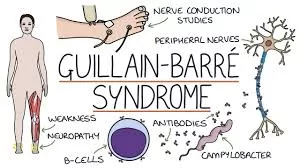Introduction
Non-communicable diseases (NCDs) are a leading cause of global morbidity and mortality, with conditions such as cardiovascular diseases, diabetes, neurodegenerative disorders, cancer, and organ-related illnesses impacting millions. A critical factor in their development is oxidative stress—an imbalance between reactive oxygen species (ROS) and the body’s antioxidant defenses. Antioxidant enzymes play a vital role in neutralizing ROS and maintaining cellular homeostasis. This article explores how antioxidant-enzyme interactions influence NCD pathogenesis and their potential role in therapeutic strategies.
Mechanisms of Antioxidant-Enzyme Interaction
The body utilizes both enzymatic and non-enzymatic antioxidants to counteract oxidative stress. Enzymatic antioxidants such as superoxide dismutase (SOD), catalase (CAT), glutathione peroxidase (GPx), glutathione reductase (GRd), and thioredoxin reductase (TrxR) work to neutralize harmful ROS. Meanwhile, non-enzymatic antioxidants, including vitamin C, vitamin E, carotenoids, flavonoids, and polyphenols, contribute by scavenging free radicals and regenerating enzymatic antioxidants.
A key aspect of antioxidant-enzyme interactions is their ability to enhance each other’s effectiveness. For instance, vitamin C regenerates vitamin E, while melatonin can upregulate SOD and GPx activity. Additionally, polyphenols and flavonoids modulate antioxidant enzyme expression, exhibiting anti-inflammatory and protective effects against cellular damage.
Antioxidant-Enzyme Interactions in Disease Pathogenesis
Oxidative stress contributes to NCDs through mechanisms such as lipid peroxidation, DNA damage, and inflammatory signaling. Research highlights several critical interactions:
- Cardiovascular Diseases (CVDs): Antioxidants like flavonoids, vitamin C, and vitamin E enhance SOD, CAT, and GPx activity, reducing oxidative damage to blood vessels. Polyphenols also inhibit lipid peroxidation, lowering risks of atherosclerosis and hypertension.
- Neurodegenerative Diseases: In Alzheimer’s and Parkinson’s disease, antioxidants such as resveratrol and Coenzyme Q10 (CoQ10) improve neuronal survival by boosting antioxidant enzyme activity, while vitamin E helps reduce neuronal oxidative damage.
- Cancer: Tumor cells manipulate antioxidant pathways to survive under oxidative stress. While antioxidants protect normal cells, excessive antioxidant enzyme activity in tumors can support their growth. Targeting enzymes like SOD and GPx in cancer therapy may enhance chemotherapy effectiveness.
- Diabetes: Oxidative stress impairs insulin signaling and contributes to complications such as neuropathy and nephropathy. Polyphenols and flavonoids enhance SOD and CAT activity, helping to regulate glucose metabolism and reduce oxidative damage.
- Liver and Kidney Diseases: Oxidative stress in the liver and kidneys can lead to inflammation and fibrosis. Antioxidants such as vitamins C and E, flavonoids, and polyphenols support enzymatic antioxidant activity, potentially slowing disease progression.
Therapeutic Strategies Targeting Antioxidant-Enzyme Interactions
Advancements in therapeutic approaches harness antioxidant-enzyme interactions to manage NCDs. Potential strategies include:
- Dietary Antioxidants: Consuming foods rich in polyphenols, flavonoids, and vitamins C and E enhances antioxidant enzyme function.
- Pharmacological Agents: Drugs that activate Nrf2, a key regulator of antioxidant responses, show promise in reducing oxidative stress-related damage.
- Gene Therapy: Modulating antioxidant enzyme expression offers targeted interventions for diseases like cancer and neurodegenerative disorders.
Future Perspectives and Conclusion
Understanding the complex interplay between antioxidants and enzymes is crucial for developing effective treatments for NCDs. While dietary and pharmacological approaches offer potential benefits, further research is needed to optimize antioxidant-based therapies. Future studies should focus on elucidating molecular mechanisms, identifying new therapeutic targets, and personalizing antioxidant strategies based on individual oxidative stress profiles.
By advancing knowledge in this field, researchers and healthcare professionals can improve NCD prevention and treatment, ultimately reducing the global burden of these chronic diseases.
Disclaimer:
This article is for informational purposes only and does not constitute medical advice. Readers should consult healthcare professionals before making any changes to their diet or treatment plans.












